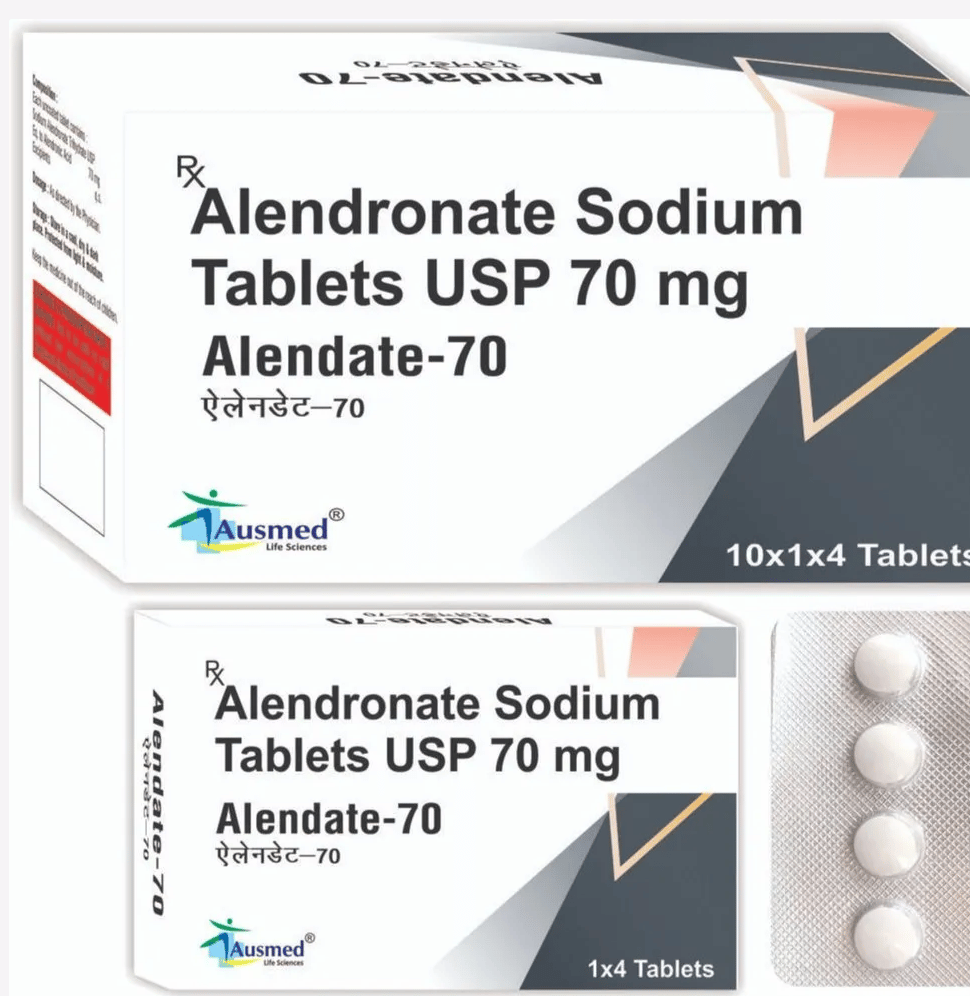What is Alendronate?
Alendronate Mechanism of Action: In adults, osteoporosis can be both prevented and treated with Alendronate. This medication is effective against the weakening and thinning of bones, a common concern as people age. Alendronate is part of the bisphosphonate class of drugs and works by stopping bone degeneration and promoting bone density.
How Does It Work?
Mechanism of Action (MOA) explains how a drug induces effects inside the body. A drug’s MOA might involve interactions with specific cells, resulting in changes to cell function or growth.
Understanding a drug’s MOA is crucial for both doctors and patients to gauge the medication’s safety and its physiological impacts. This knowledge aids doctors in determining the appropriate dosage and identifying which patients would benefit the most from the drug.
Let’s delve deeper into the Mechanism of Action of Alendronate. Keep reading to find out more!
Mechanism of Action of Alendronate
Alendronate, also known as alendronic acid, works by inhibiting bone resorption and the formation of osteoclasts (cells responsible for bone absorption and renewal), as well as kinase activation in vitro.
By inhibiting osteoclasts and reducing bone resorption, Alendronate helps manage conditions such as osteoporosis, osteogenesis imperfecta, and bone-related manifestations of Gaucher Disease.
Proper Usage of Alendronate
Before starting Alendronate, read the medication guide from your pharmacist each time you get a refill. Following the prescription instructions carefully ensures effective absorption and prevents esophageal damage. Consult your doctor or pharmacist if you have any questions on dosage or potential side effects.
Here are some guidelines for taking Alendronate:
- Take Alendronate orally once daily, immediately upon waking, before consuming any food, beverages, or other medications.
- Consume it with a full glass (6-8 ounces or 180-240 milliliters) of plain water, and make sure to swallow the tablet whole.
- Avoid chewing or sucking the tablet.
- Stay upright (sitting, standing, or walking) for at least 30 minutes after taking the medication, and do not recline before having your first food.
- For the best results, take it on an empty stomach.
- Wait at least 30 minutes (ideally 1 to 2 hours) after taking Alendronate before consuming anything other than plain water.
Avoid these items within 30 minutes of taking Alendronate:
- Calcium or iron supplements
- Vitamins
- Antacids
- Coffee
- Tea
- Soda
- Mineral water
- Calcium-enriched juices
Note: Taking these items can interfere with Alendronate’s absorption, reducing its effectiveness.
Side Effects of Alendronate
Alendronate, like any medication, can produce side effects, ranging from mild to severe, depending on individual reactions.
Common side effects of Alendronate include:
- Nausea
- Stomach pain
- Constipation
- Diarrhea
- Gas
- Bloating or fullness in the stomach
- Changes in the ability to taste food
- Headache
- Dizziness
- Swelling of joints, hands, or legs
- Muscle spasms, twitches, or cramps
In rare cases, Alendronate may cause severe side effects:
- New or worsening heartburn
- Difficulty swallowing
- Pain when swallowing
- Chest pain
- Bloody vomit or vomit that looks like coffee grounds
- Black, tarry, or bloody stools
- Fever
- Blisters or peeling skin
- Rash (worsening with sunlight exposure)
- Itching
- Hives
- Swelling of eyes, face, lips, tongue, or throat
- Difficulty breathing
- Hoarseness
- Painful or swollen gums
- Loosening of the teeth
- Numbness or heavy feeling in the jaw
- Poor healing of the jaw
- Eye pain
- Dull, aching pain in the hips, groin, or thighs
